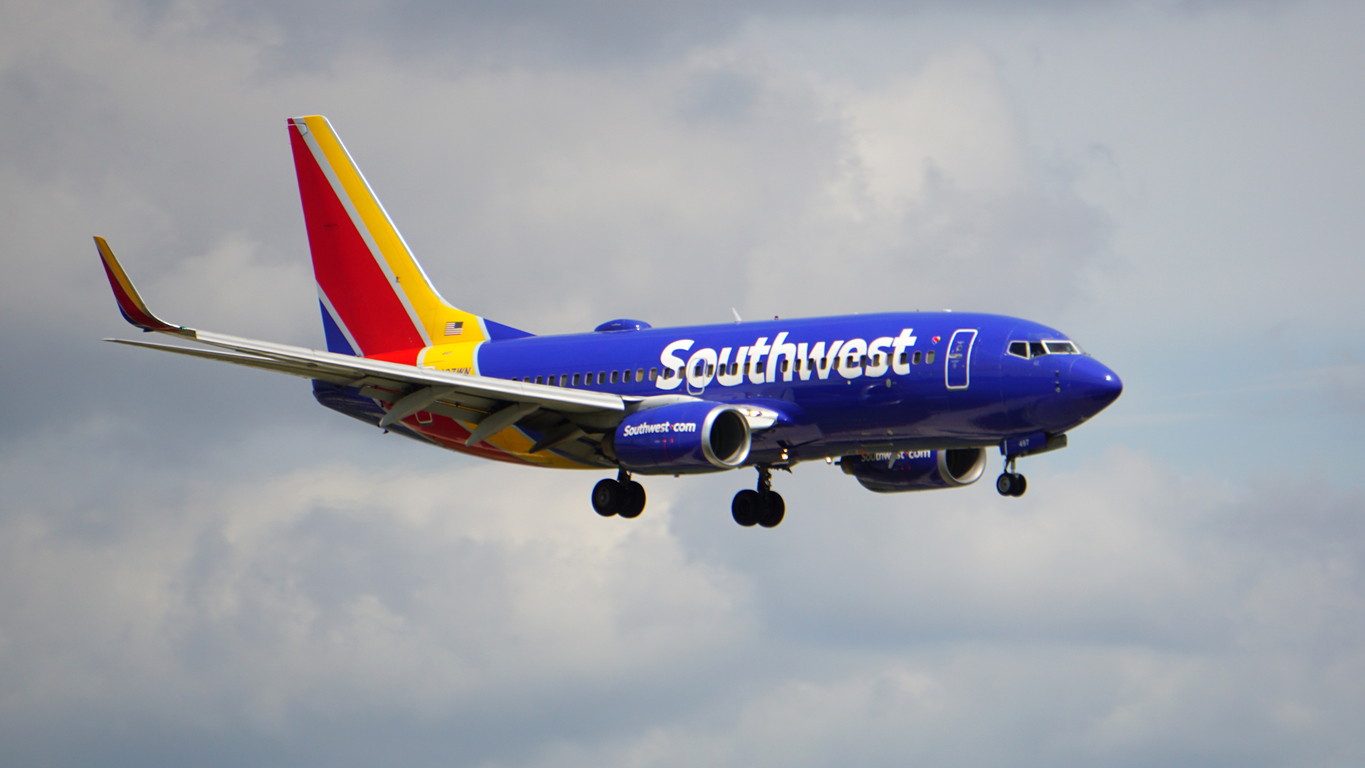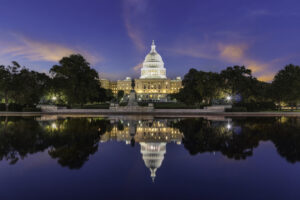How Southwest hurt perception of airlines, Twitter sees what sticks and more
Plus: The perils of locking up merchandise.

Retailers are attempting to strike a balance between protecting goods from shoplifters and allowing actual customers to access the items for purchase, according to ABC News.
Inventory loss — known in the industry as “shrink” — represents annual losses of 1.4% of inventory, totaling $94.5 billion, according to a survey from the National Retail Federation. Rates of organized retail theft increased by 26.5% last year.
However, locking up items creates a wealth of problems, ranging from customer service to staffing to, yes, PR.
Locking up items can reduce sales by 15-25%, one study found. It puts more pressure on low-wage workers who are often already short-staffed. And it creates opportunities to discriminate against people of color.
As ABC News reports:
“Whenever there’s a push toward greater criminalization, whenever there’s a narrative of increased crime and things like that, it is always consumers of color that are going to be bearing the brunt,” said Tiffany Gill, associate professor of history at Rutgers University, and an expert in African American Women’s History, fashion and beauty culture.
CVS Health Corp. and Sephora declined to comment for the story. Walmart said that its position of not locking up beauty products for women of color remains the same. Target confirmed it was locking up more products but instead of targeting certain items, it locks up entire categories.
Indeed, Walgreens has already admitted it may have gone too far in locking up items and placing security guards in stores. But will things change?
Why it matters: Convincing customers to shop in a store that’s less convenient for them is a huge communications challenge. While some of the stores affected thrive on convenience — if you need toothpaste now, you won’t wait two days for it to be delivered to your home — other items put behind lock and key can be purchased elsewhere without the trouble of flagging down a worker to unlock a case.
And the issue of stores locking up items based on the race of their end user continues to be a problem. Work to ensure cashiers and stockers are receiving DE&I training around subconscious bias for tto reduce the risk of reputational damage.
Twitter still making up new features and policies as it goes
Twitter continues to throw out a bewildering array of new policies, often immediately revising those policies after public backlash.
It all paints a picture of a company that isn’t thinking very hard about its customers or how the product is used, outside of the loudest voices in Elon Musk’s timeline.
First, and most jaw-dropping, Twitter is considering a $1,000 monthly fee for the new gold business verification badge, plus $50 a month for affiliated accounts.
Twitter is reportedly emailing businesses offering gold check mark verification for $1000 PER MONTH!
And affiliate account verification for $50 each per month pic.twitter.com/hohTPKLKdi
— Matt Navarra (I quit X. Follow me on Threads) (@MattNavarra) February 3, 2023
This shows a continuing lack of understanding of the role verification plays on Twitter. Verification has not traditionally been valued a trophy to be shown off on a shelf. It’s been a trusted way for both users and brands to have confidence that they know who they’re talking to. Setting such a high fee will only encourage more brands to turn away from Twitter — and allow impersonators with the $8 monthly blue checkmark to continue to fool users who have been trained for years to trust the blue checkmark.
Musk has also said they’ll institute a revenue sharing program with creators — similar to what TikTok or YouTube do — but only if you’re paying them $8 for Twitter Blue.
That’s right: you must pay money in order to earn money.
There have been no details shared about how the revenue share would work, except that it, too, is pay to play.
Finally, Musk announced that Twitter would put its API access behind a paywall, shutting down free access to both third party clients as well as Twitter bots that posted fun content to the site via automation. If you want to constantly post lyrics to “Africa” by Toto, you’ve got to pay $100 a month.
Once again, Musk didn’t consider the ways these bots positively contribute to Twitter’s atmosphere when he announced the policy. He has since walked it back and said there would be a “light, write-only API for bots providing good content that is free.”
Why it matters: This all shows that Twitter — or just Musk, for it’s hard to tell the difference these days — isn’t thinking proactively about the ripple effects policies have. Yes, Twitter needs to make money. But its consistent alienation of advertisers, abrupt implementation of fees for long-free products, and lack of understanding of basic parts of the ecosystem like bots and verification are all concerning for the long-term health of the app.
How Southwest damaged trust in airlines
We now have some data on just how badly the Southwest Christmas meltdown damaged overall trust in the airlines industry.
According to a new Morning Consult poll, trust in airlines has fallen 4% since the fiasco. However, among those planning to take a trip in the next three months, that number falls to 7%.
Why it matters: These numbers show decreased trust not just for Southwest, but for the entire industry. Some thought that Southwest’s trouble will be other airline’s gain, but sometimes it just exposes overall weaknesses across an entire category. The next time there’s a disaster with a competitor, make plans to bolster trust among your customers and show how you’re different.
Employers are still struggling to figure out what work looks like now
Some companies have tried draconian crackdowns to get workers back into the office to party like it’s 2019. Others have gone fully remote forever. And the likely largest group is trying to figure out a hybrid path that allows workers the flexibility they now demand and employers the in-office environment and culture they want, the Washington Post reports. Office occupancy has hit 50% in the top 10 cities for the first time since before the pandemic, but experts don’t expect it to climb much higher.
Instead, we need to think of what a work future driven by worker and business needs looks like — rather than public safety measures.
Ernst & Young provides one interesting case study:
At the consulting firm Ernst & Young, a hybrid model allowed employees to make team-based decisions about when to work in the office or remotely, according to Ginnie Carlier, EY Americas vice chair. The company also reimburses U.S. workers for commuting, child care and pet care. Employee input into back-to-work plans plus the perks have led to a 150 percent increase in employees coming back since last February.
“By centering around flexibility, we’re creating norms that meet the needs of our people,” Carlier said.
The push and pull on employees is happening as employee engagement has fallen to its lowest level in a nearly decade, with just 32 percent of workers saying they feel engaged at work, compared with 36 percent in 2020, according to Gallup. Young workers report that they are struggling in particular, the Gallup survey of about 67,000 employees found.
Why it matters: Each company must decide what makes the most sense for their industry, their culture and their workers. Whatever you do, take a page from Ernst & Young’s book and listen to employees. Give them autonomy to make choices and give them resources that make it attractive to come to the office, rather than simply threatening their jobs if they don’t show up. Be creative, be flexible and you might be surprised what you can come up with together.
Allison Carter is executive editor of PR Daily. Follow her on Twitter or LinkedIn.








You are NOT GUILTY if you lock your front door when you are not there to be sure no one comes in to take things, and stores are not guilty for locking up merchandise to reduce theft. Kids are not guilty for locking their parked bicycles, nor are churches and police stations guilty for locking their doors and vehicles.
Unless one thinks that one race is more inclined than another to steal, you are not insulting any one race if you lock your doors, merchandise and bike.
Because many minority neighborhoods are underserved by retailers, it is especially important that retailers should minimize thefts in all neighborhoods. The alternative, closing say 10% of a chain’s stores could especially hurt neighborhoods where other stores may not be numerous.
Giving more to charity would be better than allowing yourself to be victimized by thieves. I wouldn’t be surprised if doors are locked nights weekends even by publishers of newsletters.
If stores lock away less so fewer employees are necessary, that’s no favor to anyone. If stores have to charge more for shrinkage instead of locking away merchandise, that’s assuredly no favor to anyone.
“Safety first” is neither a crazy idea nor a hate slogan. And if retailers don’t tell newsletters how to run their businesses, should newsletters tell retailers?